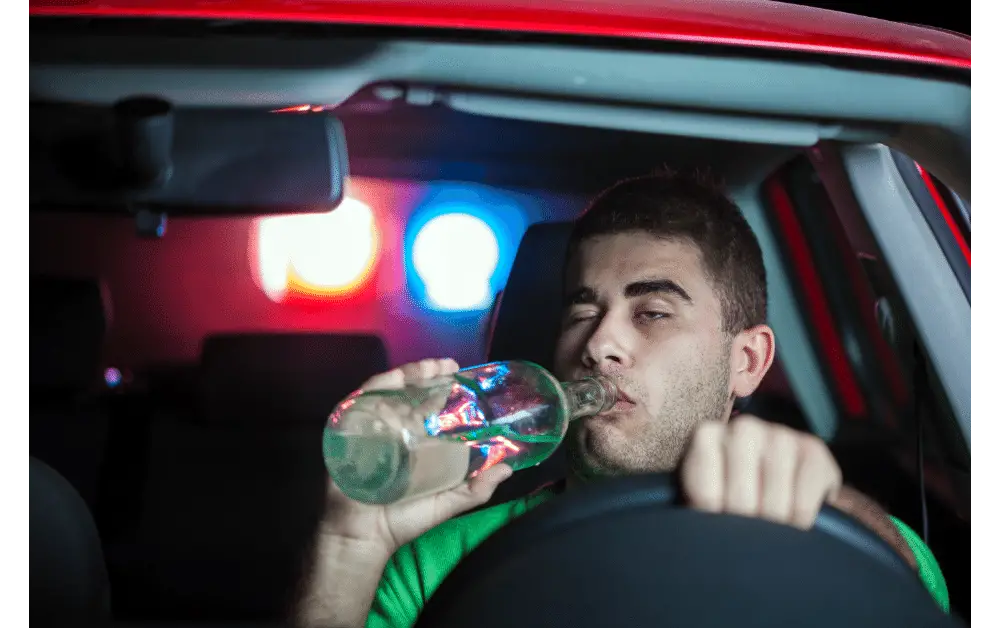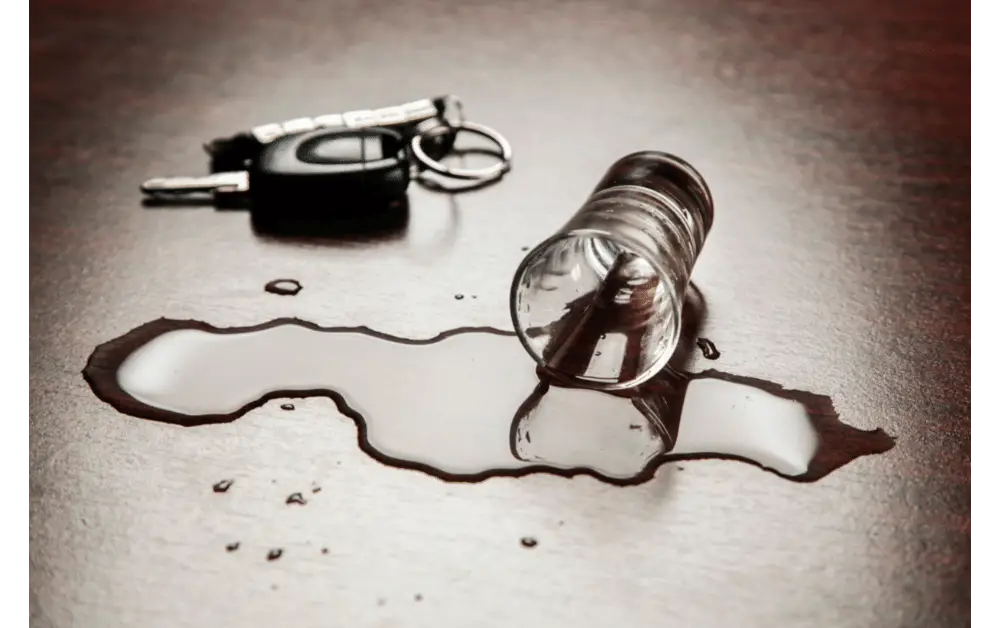Last Updated on May 24, 2022 by Fair Punishment Team
If you’re having a good time catching up with friends or family, it can be easy to lose track of time and how much alcohol you’ve consumed. At the end of the night, it’s second nature to get behind the wheel and drive home without a second thought.
You’re feeling great – until you see the blue and red flashing lights behind you, that is. But you don’t feel drunk, or even tipsy, so what’s the problem?
You might be wondering if drunk driving is actually a crime or if it is just frowned upon. So, let’s find out together.

Is drunk driving a crime?
It shouldn’t come as any surprise that driving under the influence of alcohol is definitely a crime. In the US for over 21 year olds, driving with a blood alcohol content (BAC) of over 0.08% is a criminal offence in every state. Drivers who are under 21 years old are not legally allowed to drink and therefore will be penalized if found driving with a BAC of as low as 0.00%, which can be found at even a hint of alcohol in the body. .
When you consume alcohol, it starts to metabolize in your liver. It takes around an hour to process one alcoholic drink, so you won’t feel the effects right away. Drinking more than one alcoholic drink in one hour increases the concentration of the alcohol in your system and therefore it will take longer for your body to break it down.
The longer the alcohol is in your system, the longer it can affect you and your ability to carry out normal tasks. You need an incredible amount of concentration for driving, and even a small amount of alcohol in your system can make you a danger behind the wheel.
How many drinks is allowed?

For every standard drink that you consume, your BAC will increase around 0.02%. So, to remain under the 0.08 limit, you should consume no more than three or four drinks. To keep well under the limit, only having one or two drinks is the safer and smarter option.
But what constitutes a standard drink? Distilled spirits have a much higher percentage of alcohol than beer, but you’re consuming a considerably smaller amount of liquor opposed to a beer in one drink.
The US sets a standard drink as containing 14 grams of pure alcohol, which can be found in:
- 12 fl oz beer
- 8-9 fl oz malt liquor
- 5 fl oz wine
- 1.5 fl oz distilled spirits
So, to remain under the limit, you can drink:
- About half a pint of beer
- 250ml of malt liquor
- One medium (150ml) glass of wine
- Either 2 single shots of liquor or 1 double serving
However, it’s important to remember that these servings are not always under the limit. You might have chosen an alcoholic beverage with a higher alcohol content, or your bartender might be feeling particularly generous that evening.
It is always safer to skip the driving altogether if you’re planning on drinking alcohol. Likewise, skip the drinking if you cannot get out of driving somewhere.
Drunk driving penalties

Depending on which state the crime is committed in, the penalty varies slightly for the offender. Most states will treat the first offence as a misdemeanor and give you a fine. Some states also suspend your driving license, install a certified ignition interlock device onto your vehicle, and enroll you in the driving under the influence program for a number of months. Some will also imprison you for up to six months.
If you were to reoffend, most states would consider this to be another misdemeanor. However, you’ll get harsher consequences such as a longer driving ban, a higher fine, longer in prison, and more.
The third offence will be treated harsher again, with some states like Alabama treating it as a Class C Felony. However, other states such as California will consider it to be another misdemeanor, but with harsher punishments again.
California states that any driver convicted of three or more DUI offenses within 10 years might be liable to a 10 year driving ban. This is just an example of the stricter punishments that you might be faced with after your third drunk driving offence.
Most states agree that the fourth offence is considered a felony and will be met with a fine, imprisonment up to 3 years, a driving ban, and a further restricted driving license. Ignition Interlock will also be installed onto all vehicles that you own for up to three years from your conviction. Again, you’ll need to complete the driving under the influence program.
You will need to research the penalties for drunk driving in your current state. However, here is an example of the driving under the influence penalties for crimes that were committed in Washington DC and Texas.
Washington DC DUI Penalties
1st Offense: Misdemeanor
- Fine: $300 to $1000
- Jail: up to 90 days
- License revocation: 6 months
- Possible vehicle impoundment
- Possible alcohol education program and treatment
2nd Offense: Misdemeanor
- Fine: $1000 to $5000
- Jail: 5 days to 1 year
- License revocation: 1 year
- Possible community service for 30 days
- Possible vehicle impoundment
- Possible alcohol education program and treatment
3rd and subsequent Offense – MIsdemeanor
- Fine: $1000 to $5000
- Jail: 5 days to 1 year
- License revocation: 1 year
- Ignition interlock restriction
- Possible community service for 30 days
- Possible vehicle impoundment
- Possible alcohol education program and treatment
Texas DUI Penalties
1st Offense: Class B Misdemeanor
- Fine: up to $2000
- Jail: up to 180 days
- License revocation: 90 days to 1 year
- Possible Ignition Interlock
- Annual license surcharge between $1200 and $2000 for up to three years to retain license.
2nd Offense: Class A Misdemeanor
- Fine: up to $4000
- Jail: up to 1 year
- License revocation: between 180 days and 2 years
- Possible Ignition Interlock
- Annual license surcharge between $1200 and $2000 for up to three years to retain license.
3rd Offense – Second Degree Felony
- Fine: up to $10,000
- Jail: between 2 and 20 years
- License revocation: between 1 and 2 years
- Ignition interlock restriction
- Possible Ignition Interlock
- Annual license surcharge between $1200 and $2000 for up to three years to retain license.
Summary

As you can see from the examples above, driving under the influence is definitely a crime and can carry some heavy consequences. Remember that the legal limit for under 21 year olds is 0.08% and the limit for under 21 year olds is under 0.02%.
If you’re ever in doubt, don’t drive if you’ve been drinking. It is safer for you and others on the road if you put your keys away and sleep it off before getting them out again.

